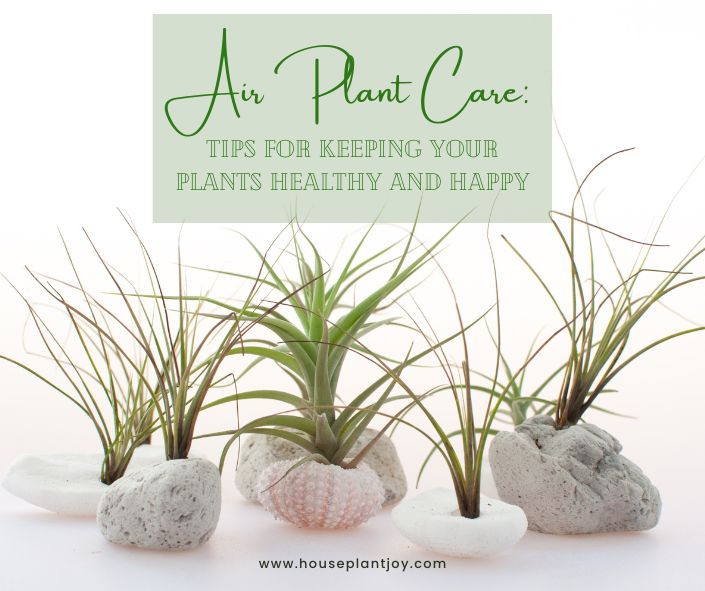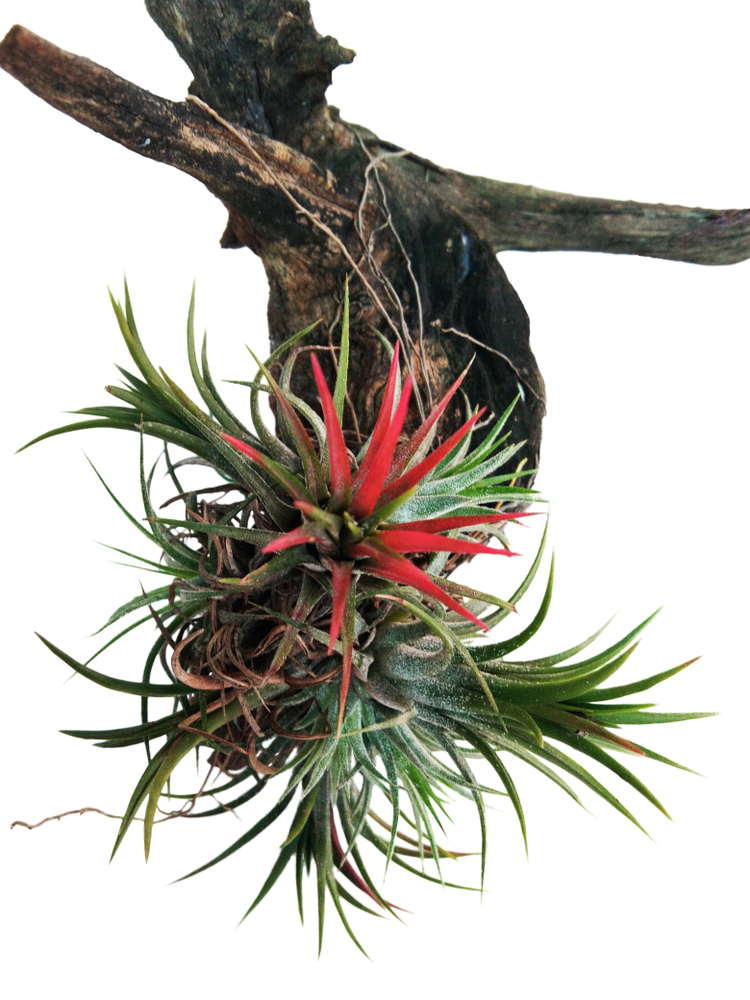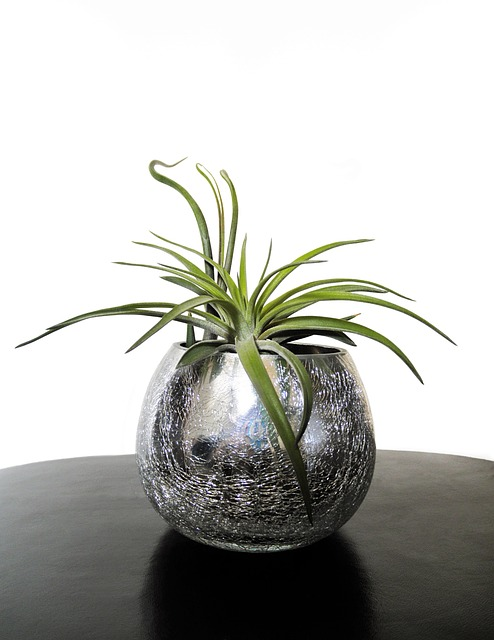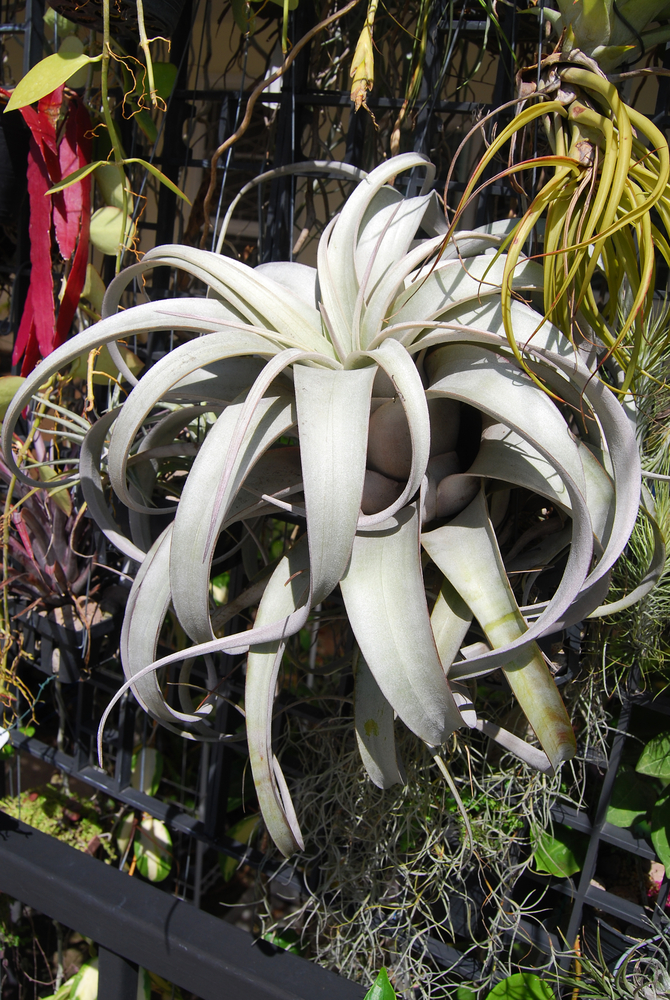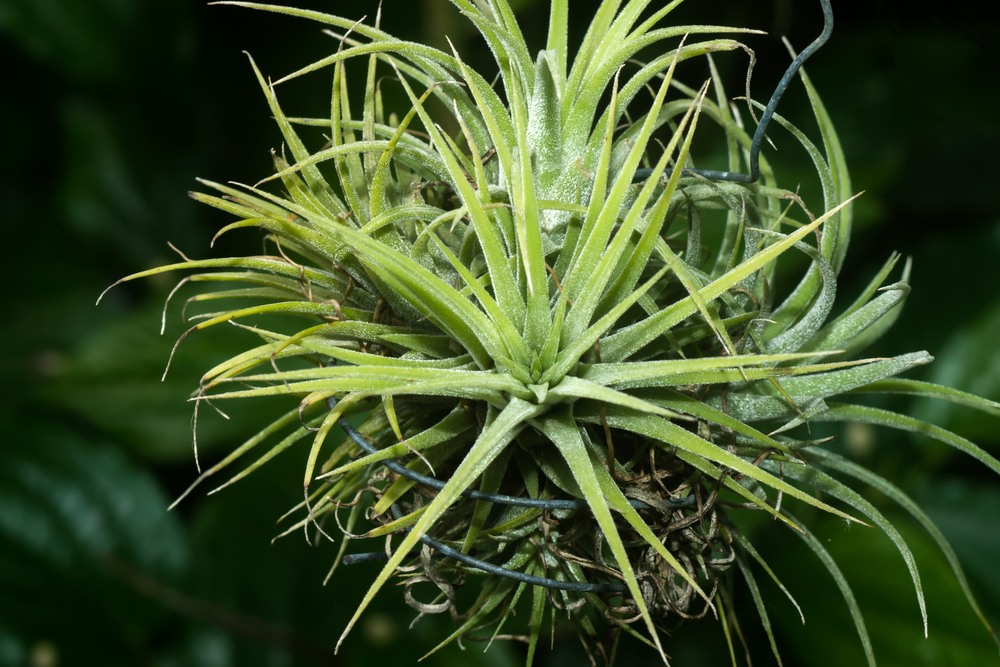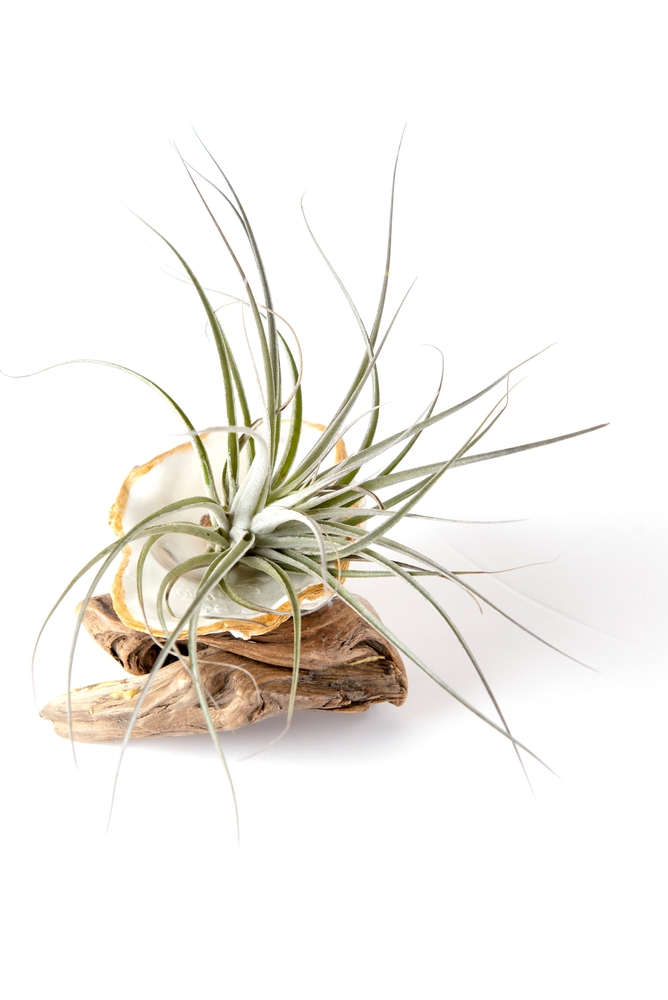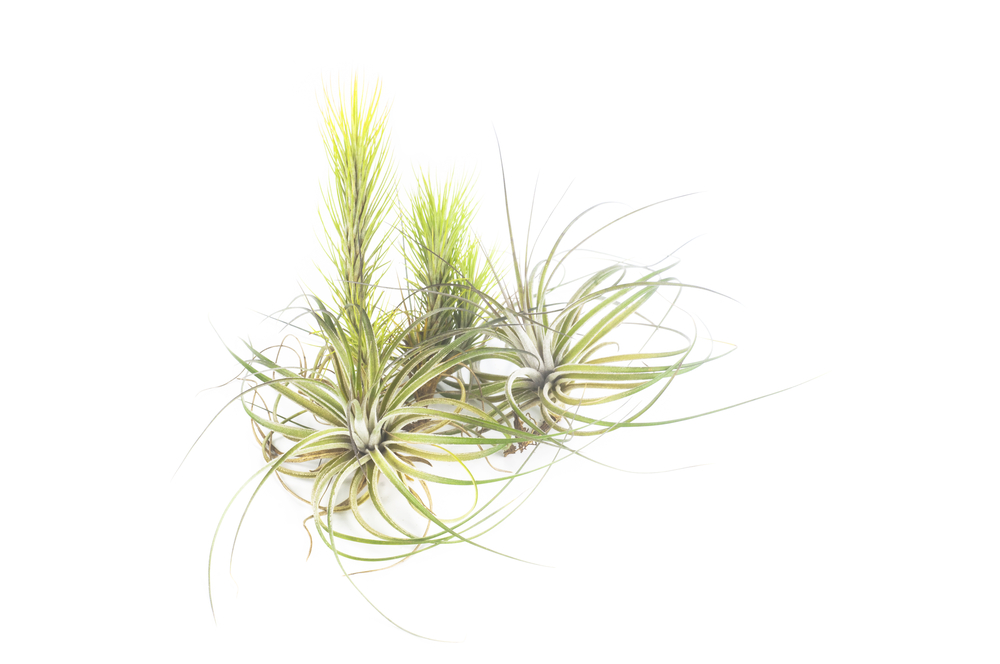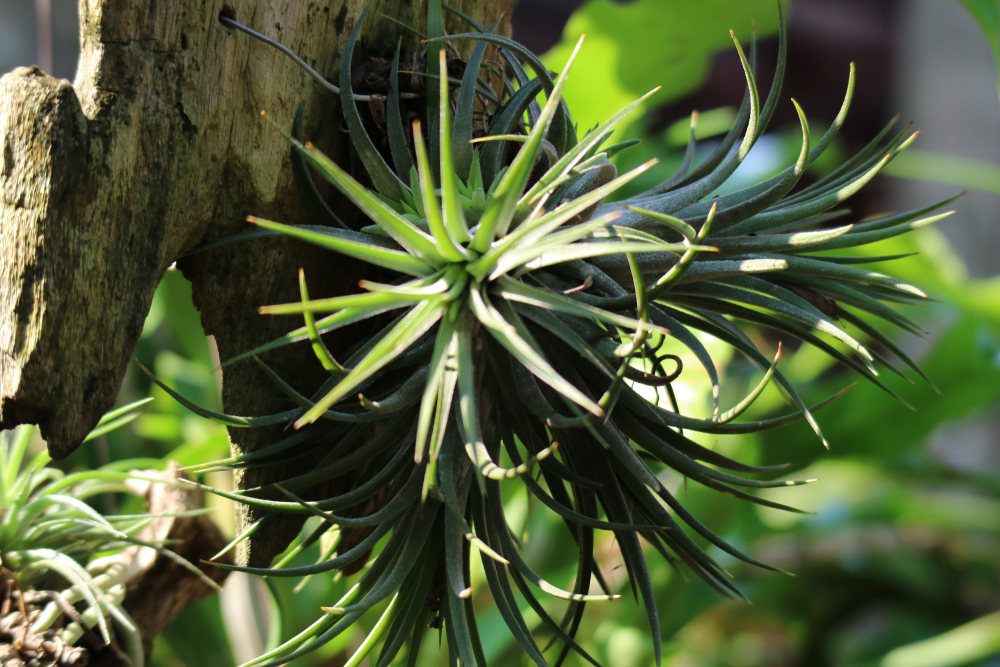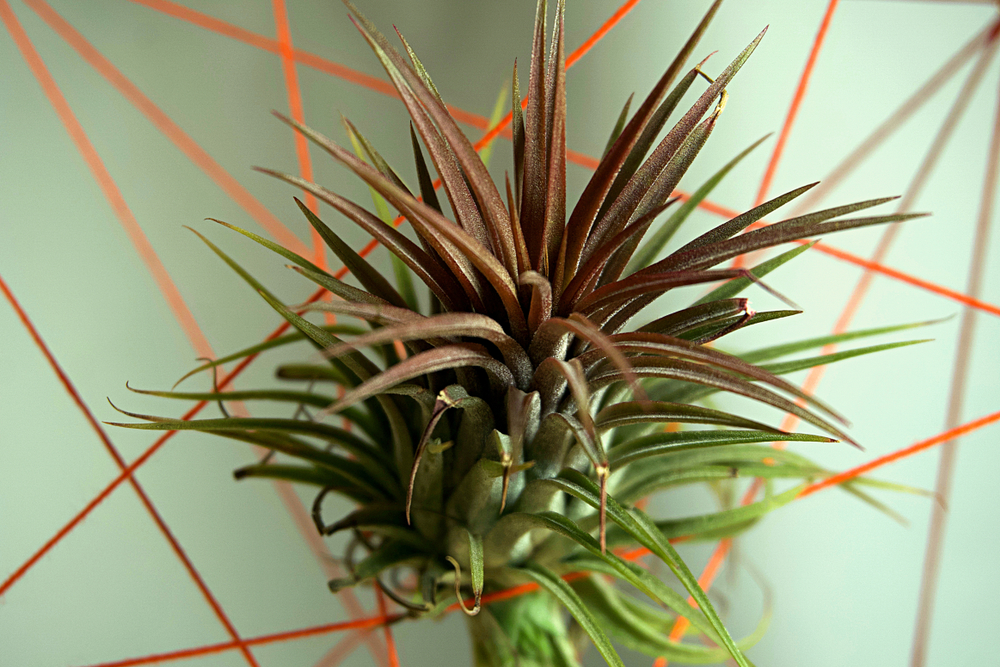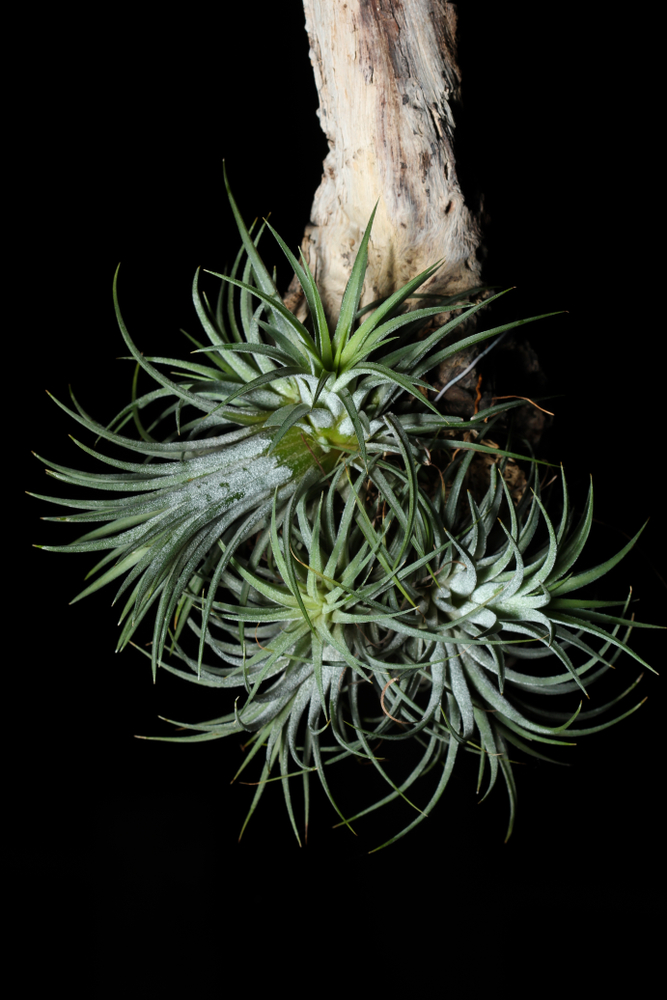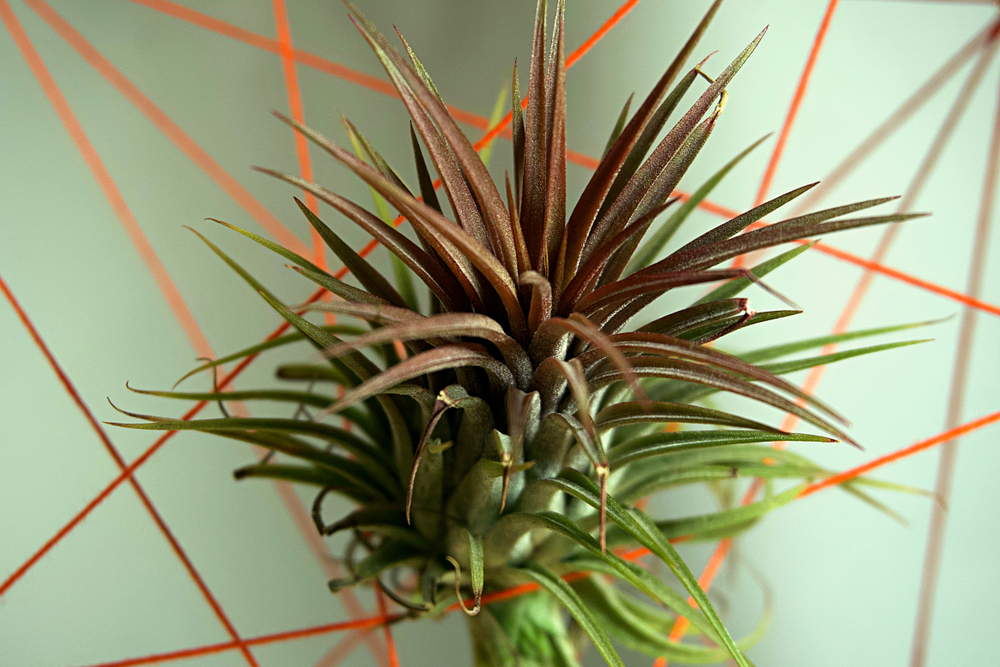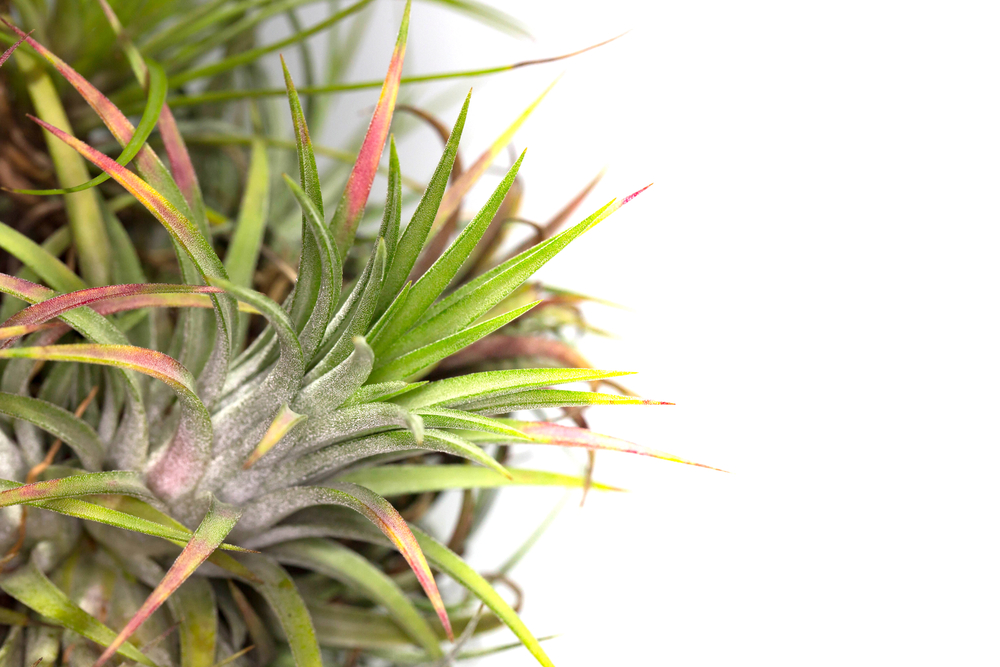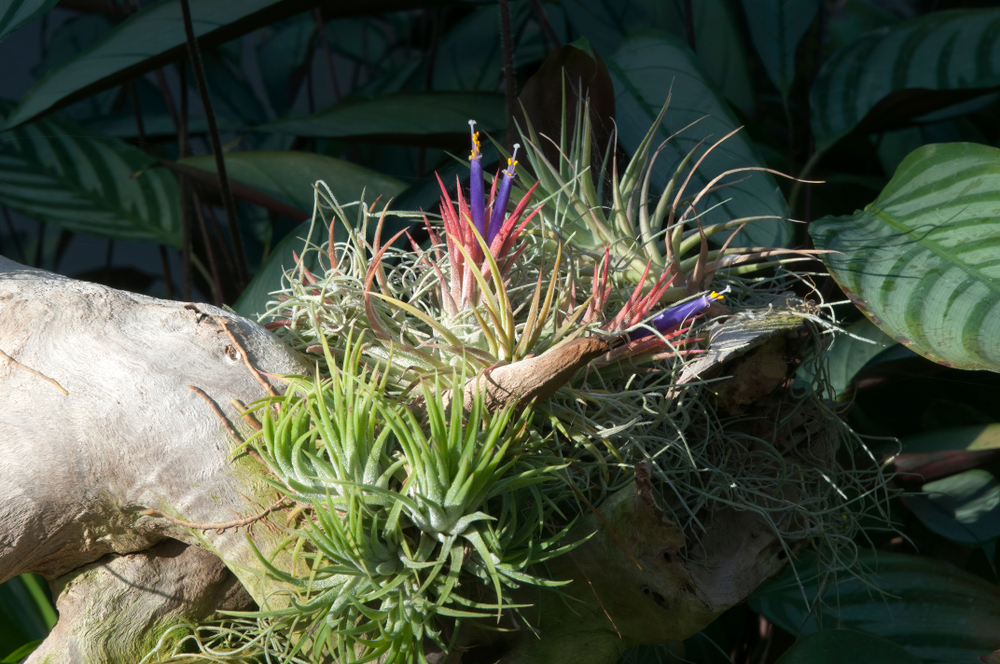HousePlantJoy is supported by our audience. When you purchase through one of our links, we may earn a small affiliate commission. As an Amazon Associate I earn from qualifying purchases. Your cost is not affected.
==================
Air Plant Care: Tips for Keeping Your Plants Healthy and Happy
Air plants, also known as Tillandsia, are unique plants that do not require soil to grow. Instead, they absorb moisture and nutrients from the air through their leaves. Due to their low maintenance requirements, planting air plants have become increasingly popular in recent years. However, despite their easy-going nature, proper care is still necessary to ensure their health and longevity.
As an avid air plant enthusiast, I have learned that there are a few key factors to consider when it comes to caring for these fascinating plants. Firstly, like an air fern care, it is important to provide them with adequate light and moisture. While air plants do not need to be watered as frequently as traditional plants, they still require a regular misting or soaking to prevent dehydration. Additionally, they thrive in bright, indirect sunlight and should be kept away from direct heat sources.
As an avid air plant enthusiast, I have learned that there are a few key factors to consider when it comes to caring for these fascinating plants. Firstly, it is important to provide them with adequate light and moisture. While air plants do not need to be watered as frequently as traditional plants, they still require a regular misting or soaking to prevent dehydration. Additionally, they thrive in bright, indirect sunlight and should be kept away from direct heat sources.
Air Plant Basics
What are Air Plants?
Air plants, also known as Tillandsia, are a type of epiphytic plant that grows without soil. They are native to Central and South America and are known for their unique ability to absorb water and nutrients through their leaves. Air plants can grow in a variety of environments, making them a popular choice for indoor gardening.
Types of Air Plants
There are over 650 different species of air plants, each with its own unique characteristics. Some of the most popular types of air plants include the Tillandsia ionantha, Tillandsia xerographica, and Tillandsia stricta.
Epiphytic Plants
Air plants are epiphytic plants, which means they grow on other plants or objects, but do not rely on them for nutrients. In their natural habitat, air plants grow on trees, rocks, and other surfaces. They have evolved to absorb nutrients and moisture from the air and rain.
Air Fern Plant Care Needs
Air plants require minimal care and maintenance, but they do have specific needs to thrive. Here are some important factors to consider when caring for air plants:
- Light:
Air plants prefer bright, indirect light, but can tolerate some direct sunlight. Avoid placing them in full sun, as this can cause their leaves to burn.
- Water:
Air plants need to be watered regularly, but they should not be over-watered. They can be watered by misting them with a spray bottle or soaking them in water for 30 minutes once a week.
- Air:
Air plants require good air circulation to thrive. They should be placed in a well-ventilated area, but should not be exposed to drafts or extreme temperatures.
- Humidity:
Air plants prefer humid environments, but can tolerate lower humidity levels. They can be misted with water to increase humidity.
- Temperature:
Air plants prefer temperatures between 50-90°F (10-32°C). They can tolerate lower temperatures, but should not be exposed to freezing temperatures.
- Nutrients:
Air plants do not require soil, but they do need nutrients to thrive. They can be fertilized with a low-nitrogen fertilizer once a month.
- Soil:
Air plants do not require soil, but they can be grown in a variety of mediums, such as moss, bark, or sand.
- Roots:
Air plants have shallow roots that are used to anchor them to their growing surface. They do not require soil or extensive root systems.
- Leaves:
Air plants absorb water and nutrients through their leaves, which are covered in specialized scales called trichomes. These scales help the plant to absorb moisture and nutrients from the air.
Overall, air plants are a great choice for indoor gardening, as they are easy to care for and can add a unique touch to any space. By following these basic care guidelines, you can help your air plants thrive and enjoy their beauty for years to come.
Watering Air Plants
Misting Air Plants
I always mist my air plants with a spray bottle filled with rainwater. Misting is a great way to provide your air plants with the humidity they need to thrive. I mist my air plants once a day, but you may need to adjust the frequency depending on the humidity levels in your home.
Soaking Air Plants
Soaking is another way to water air plants. To soak your air plants, fill a bowl with rainwater and submerge your plants for 30 minutes to an hour. After soaking, gently shake off any excess water and allow your air plants to dry upside down before returning them to their display. I soak my air plants once a week, but again, you may need to adjust the frequency depending on the humidity levels in your home.
Watering Frequency
Air plants don’t need to be watered as frequently as other plants. In fact, overwatering is one of the most common mistakes people make with air plants. I water my air plants once a week, but you may need to adjust the frequency depending on the humidity levels in your home.
Tap Water vs. Rainwater vs. Distilled Water
I always use rainwater to water my air plants because it’s free of chemicals and minerals that can harm your plants. If you don’t have access to rainwater, you can use distilled water or tap water that has been left out overnight to allow the chlorine to evaporate. Avoid using softened water, as it contains salt that can damage your air plants.
In summary, misting and soaking are two effective ways to water air plants, and it’s important to adjust the frequency of watering depending on the humidity levels in your home. Using rainwater or distilled water is recommended to avoid harming your air plants with chemicals and minerals.
Light and Temperature
Light Requirements
As an air plant owner, I’ve learned that light is one of the most important factors in the health and growth of my plants. Air plants thrive in bright, filtered light, but direct sunlight can be harmful to them. If you’re keeping your air plants indoors, place them near a bright window, but make sure they are not in direct sunlight. If you’re keeping your air plants outside, it’s best to keep them under the canopy of trees, where they can get bright, filtered light.
Temperature Requirements
Temperature is another important factor to consider when caring for air plants. They prefer temperatures between 50 and 90 degrees Fahrenheit. If the temperature drops below 50 degrees, your air plants may start to suffer. On the other hand, if the temperature is consistently above 90 degrees, your air plants may become dehydrated and start to wilt.
Climate Considerations
The climate you live in can also affect the health of your air plants. If you live in a dry climate, you may need to mist your air plants more frequently to keep them hydrated. If you live in a humid climate, you may not need to mist your air plants as often. It’s important to pay attention to the environment your air plants are in and adjust your care accordingly.
In summary, air plants require bright, filtered light and temperatures between 50 and 90 degrees Fahrenheit. The climate you live in can also affect the health of your air plants, so it’s important to pay attention to the environment they are in. By providing the right light and temperature conditions, you can ensure that your air plants thrive and grow.
Air Plant Propagation
As an air plant enthusiast, I have found that propagating air plants is a great way to expand my collection and share the joy of these unique plants with others. In this section, I will share some tips and tricks I have learned about propagating air plants.
Pups and Offshoots
One of the easiest ways to propagate air plants is through their natural process of producing “pups” or offshoots. Pups are small, miniature versions of the parent plant that grow from the base of the plant. They can be separated from the parent plant once they are about one-third to one-half the size of the parent plant. To separate the pup, gently twist it away from the parent plant, taking care not to damage the roots.
Propagating Air Plants
Another method of propagating air plants is by using the division method. This involves separating the parent plant into smaller sections, each with its own root system. To do this, gently pull apart the plant at the base, taking care to keep the roots intact.
Another method of propagation is by using stem cuttings. This involves cutting a small section of the stem from the parent plant and allowing it to dry for a few days. Once the cut end has calloused over, the cutting can be planted in soil or attached to a piece of wood or other material.
Air Plant Blooms
Air plants are known for their unique and beautiful blooms. While propagation is not always necessary to encourage blooming, it can help to produce a larger number of blooms. To encourage blooming, make sure your air plant is getting enough light and water. A good rule of thumb is to soak your air plant once a week and place it in a bright, indirect light.
In conclusion, propagating air plants can be a fun and rewarding experience for any air plant enthusiast. Whether you choose to propagate through pups, division, or stem cuttings, taking care to follow proper care and propagation techniques will help to ensure the success of your new plants.
Air Plant Display
Air plants are unique and versatile plants that can be displayed in many creative ways. Here are some popular ways to display air plants:
Air Plant Terrariums
Air plant terrariums are a popular way to display air plants. Terrariums are enclosed glass containers that create a miniature ecosystem. They come in many shapes and sizes, from simple geometric shapes to elaborate designs. Air plants can be displayed in a terrarium with other decorative elements such as rocks, sand, or moss.
Driftwood and Wire Displays
Driftwood and wire displays are a natural and rustic way to display air plants. Driftwood can be used to create a unique and organic display for air plants. Wire can be bent and shaped to create a custom display for air plants. These displays can be hung on a wall or placed on a tabletop.
Glass Globes and Shallow Containers
Glass globes and shallow containers are a simple and elegant way to display air plants. Glass globes can be hung from the ceiling or placed on a tabletop. Shallow containers can be filled with decorative elements such as sand, rocks, or seashells to create a beautiful display for air plants.
Air Plant Wreaths
Air plant wreaths are a unique and creative way to display air plants. Wreaths can be made from a variety of materials, such as grapevine wreaths or wire frames. Air plants can be attached to the wreath with wire or hot glue. Wreaths can be hung on a wall or used as a centerpiece.
In conclusion, there are many creative ways to display air plants. Whether you prefer a natural and rustic display or a simple and elegant display, there is a display option for every style. Experiment with different displays to find the perfect way to showcase your air plants.
Air Plant Maintenance
As an air plant enthusiast, I have learned that proper maintenance is crucial for the health and longevity of these unique plants. Here are some tips for keeping your air plants healthy and thriving.
Cleaning Air Plants
Air plants are naturally dust collectors, and a buildup of dust can impede their ability to absorb nutrients and water. To clean your air plants, gently rinse them with lukewarm water once a week. You can also soak them in water for 30 minutes to an hour every few weeks to give them a deep clean. After soaking, shake off any excess water and allow them to dry upside down on a towel for a few hours before returning them to their display.
Fertilizing Air Plants
Air plants require nutrients to grow and thrive, and while they can absorb some from the air, they also benefit from occasional fertilization. I recommend using a water-soluble fertilizer specifically formulated for air plants, such as Tillandsia fertilizer, once a month. Be sure to follow the instructions carefully, as over-fertilization can damage your plants.
Handling and Damage
Air plants are delicate and can be easily damaged if mishandled. When handling your air plants, be sure to hold them gently by the base, avoiding pulling or twisting their leaves. If you notice any brown leaf tips, trim them off with sharp, clean scissors. Avoid exposing your air plants to direct sunlight or extreme temperatures, as this can cause damage or even death.
Pests and Diseases
Like all plants, air plants can be susceptible to pests and diseases. Common pests that can affect air plants include scale insects and mealybugs. If you notice any signs of infestation, such as small white or brown bumps on your plants, treat them immediately with a natural insecticide or by wiping the affected areas with rubbing alcohol. Air plants can also be susceptible to fungal or bacterial infections, which can cause discoloration or rotting. To prevent these issues, be sure to avoid over-watering your plants and provide them with adequate air circulation.
In summary, proper maintenance is crucial for the health and longevity of air plants. Regular cleaning, fertilization, gentle handling, and vigilant pest and disease control can help keep your air plants thriving for years to come.
Air Plant Collection
As an air plant enthusiast, I have grown a diverse collection of air plants over the years. Air plants, also known as Tillandsia spp., are part of the Bromeliad family and are epiphytes, which means they grow on other plants without harming them. They are unique and fascinating plants that can be displayed in various ways, from hanging them in glass terrariums to mounting them on driftwood.
Air Plant Varieties
Air plants come in a wide range of shapes, sizes, and colors. Some of my favorite varieties include:
- Tillandsia xerographica: A large, silver-gray air plant that forms a rosette shape.
- Tillandsia ionantha: A small air plant with bright green leaves that turn red when it blooms.
- Tillandsia stricta: A medium-sized air plant with thin, spiky leaves and bright pink flowers.
- Tillandsia capitata: A round, ball-shaped air plant with soft, velvety leaves.

Bromeliad Family
Air plants belong to the Bromeliad family, which includes over 3,000 species of plants. Bromeliads are known for their striking foliage and unique growth habits. They are epiphytes, which means they grow on other plants without harming them. Some bromeliads are also terrestrial, meaning they grow in soil.
Epiphytes and Orchids
Epiphytes are plants that grow on other plants without harming them. Air plants are just one type of epiphyte. Orchids are another common type of epiphyte. Like air plants, orchids have unique growth habits and come in a wide range of shapes, sizes, and colors.
Cacti and Succulents
While air plants are not cacti or succulents, they are often grouped with these plants because they share similar care requirements. Cacti and succulents are known for their ability to store water in their leaves, stems, and roots. Air plants, on the other hand, absorb water and nutrients through their leaves.
Overall, collecting air plants is a rewarding hobby that allows you to appreciate the beauty and diversity of these unique plants. With proper care and attention, air plants can thrive and bring joy to your home or office.

Conclusion
In conclusion, taking care of air plants is not as difficult as it may seem. With proper care, these plants can thrive and live for several years. As I have learned through my experience, air plants are unique and fascinating plants that can add a touch of greenery to any space.
One important aspect of air plant care is understanding their natural ecosystem. Air plants are epiphytes, which means they grow on other plants or objects in their natural habitat. This means they do not require soil to grow and can be displayed in creative ways.
It is essential to provide adequate air circulation for air plants to thrive. They can be misted regularly or soaked in room-temperature water for a few hours every week. After soaking, air plants should be dried completely on a paper towel to avoid rot.
Spanish moss, coral, and fuzzy air plants require more frequent watering than other types of air plants. Glue can be used to attach air plants to decorative objects, but care should be taken not to cover the base of the plant as it needs to breathe.
Softened water should be avoided as it can harm air plants. Blooms are a rare but beautiful sight in air plants, and they signify the end of the plant’s life cycle.
It is essential to avoid over-watering air plants as they are prone to root rot. In the rosette pattern, the leaves form a circle, and water can get trapped in the center, leading to rot. High humidity is beneficial for air plants, and they make great house plants.
Overall, taking care of air plants can be a fun and rewarding experience. With a little bit of knowledge and care, these unique plants can thrive and add a touch of greenery to any space.

